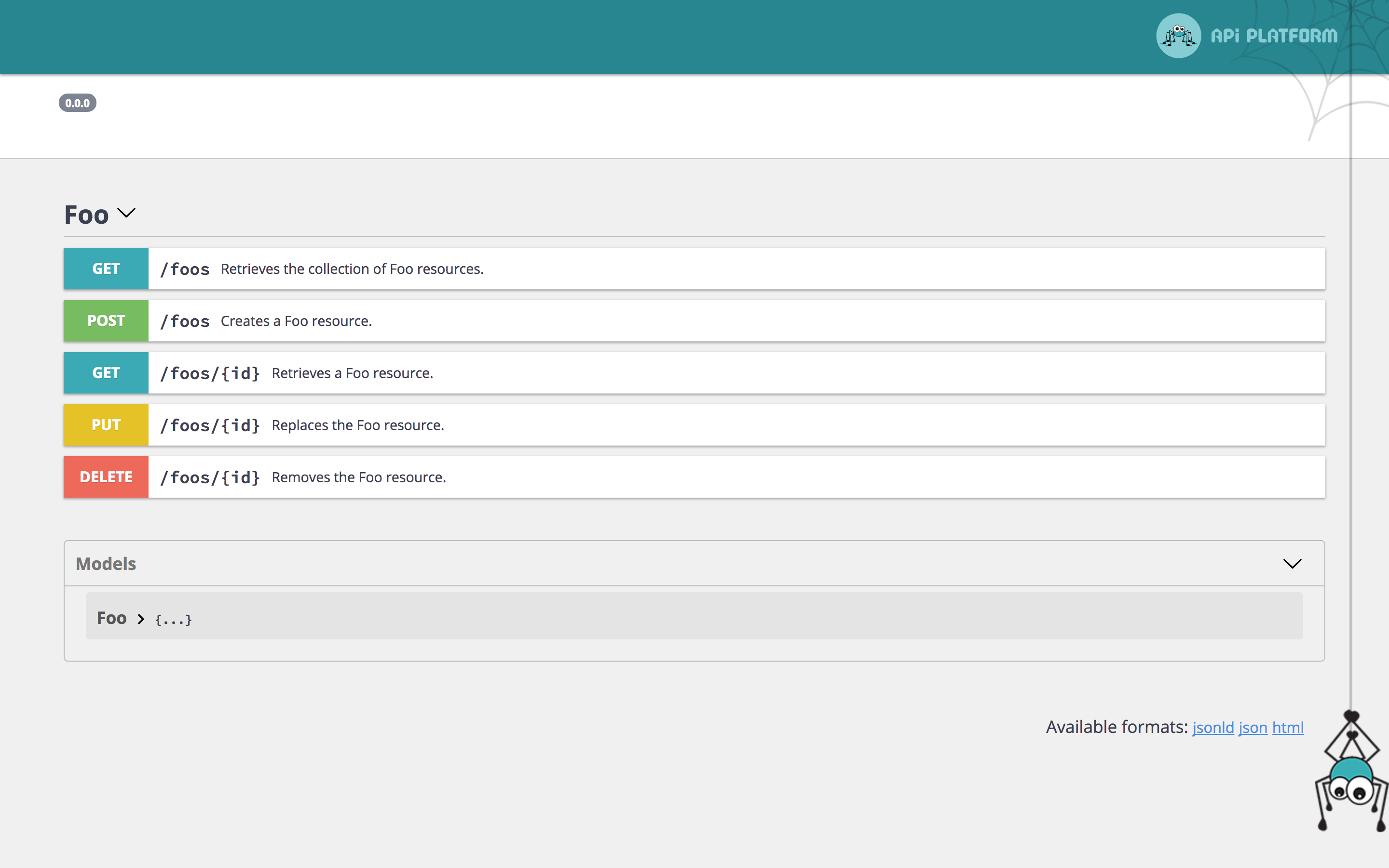# Swagger / Open API Support
API Platform natively supports the [Open API](https://www.openapis.org/) (formerly Swagger) API specification format.
It also integrates a customized version of [Swagger UI](https://swagger.io/swagger-ui/), a nice tool to display the
API documentation in a user friendly way.

## Overriding the Swagger Documentation
Symfony allows to [decorate services](https://symfony.com/doc/current/service_container/service_decoration.html), here we
need to decorate `api_platform.swagger.normalizer.documentation`.
In the following example, we will see how to override the title of the Swagger documentation and add a custom filter for
the `GET` operation of `/foos` path
```yaml
# api/config/services.yaml
services:
'App\Swagger\SwaggerDecorator':
decorates: 'api_platform.swagger.normalizer.api_gateway'
arguments: [ '@App\Swagger\SwaggerDecorator.inner' ]
autoconfigure: false
```
```php
decorated = $decorated;
}
public function normalize($object, $format = null, array $context = [])
{
$docs = $this->decorated->normalize($object, $format, $context);
$customDefinition = [
'name' => 'fields',
'description' => 'Fields to remove of the output',
'default' => 'id',
'in' => 'query',
];
// e.g. add a custom parameter
$docs['paths']['/foos']['get']['parameters'][] = $customDefinition;
// e.g. remove an existing parameter
$docs['paths']['/foos']['get']['parameters'] = array_values(array_filter($docs['paths']['/foos']['get']['parameters'], function ($param){
return $param['name'] !== 'bar';
}));
// Override title
$docs['info']['title'] = 'My Api Foo';
return $docs;
}
public function supportsNormalization($data, $format = null)
{
return $this->decorated->supportsNormalization($data, $format);
}
}
```
## Using the Swagger Context
Sometimes you may want to change the information included in your Swagger documentation.
The following configuration will give you total control over your Swagger definitions:
```php
['user:read'],
'swagger_definition_name' => 'Read',
];
}
```
## Changing Operations in the Swagger Documentation
You also have full control over both built-in and custom operations documentation:
In Yaml:
```yaml
resources:
App\Entity\Rabbit:
collectionOperations:
create_user:
method: get
path: '/rabbit/rand'
controller: App\Controller\RandomRabbit
swagger_context:
summary: Random rabbit picture
description: >
# Pop a great rabbit picture by color!

parameters:
-
in: body
schema:
type: object
properties:
name: {type: string}
description: {type: string}
example:
name: Rabbit
description: Pink rabbit
```
or with XML:
```xml
get
/rabbit/rand
App\Controller\RandomRabbit
Random rabbit picture
# Pop a great rabbit picture by color!

body
object
string
string
Rabbit
Pink rabbit
```

## Changing the Swagger UI Location
Sometimes you may want to have the API at one location, and the Swagger UI at a different location. This can be done by disabling the Swagger UI from the API Platform configuration file and manually adding the Swagger UI controller.
### Disabling Swagger UI
```yaml
# api/config/packages/api_platform.yaml
api_platform:
# ...
enable_swagger_ui: false
```
### Manually Registering the Swagger UI Controller
```yaml
# app/config/routes.yaml
swagger_ui:
path: /docs
controller: api_platform.swagger.action.ui
```
Change `/docs` to your desired URI you wish Swagger to be accessible on.
## Using the Swagger Command
You can also dump your current Swagger documentation using the provided command:
```
$ docker-compose exec php bin/console api:swagger:export
# Swagger documentation in JSON format...
$ docker-compose exec php bin/console api:swagger:export --yaml
# Swagger documentation in YAML format...
$ docker-compose exec php bin/console api:swagger:export --output=swagger_docs.json
# Swagger documentation dumped directly into JSON file (add --yaml to change format)
```
## Overriding the UI Template
As described [in the Symfony documentation](https://symfony.com/doc/current/templating/overriding.html), it's possible to override the Twig template that loads Swagger UI and renders the documentation:
```twig
{# templates/bundles/ApiPlatformBundle/SwaggerUi/index.html.twig #}
{% if title %}{{ title }} {% endif %}My custom template
{# ... #}
```
You may want to copy the [one shipped with API Platform](https://github.com/api-platform/core/blob/master/src/Bridge/Symfony/Bundle/Resources/views/SwaggerUi/index.html.twig) and customize it.
## Compatibilily Layer with Amazon API Gateway
[AWS API Gateway](https://aws.amazon.com/api-gateway/) supports OpenAPI partially, but it [requires some changes](https://docs.aws.amazon.com/apigateway/latest/developerguide/api-gateway-known-issues.html).
Fortunately, API Platform provides a way to be compatible with Amazon API Gateway.
To enable API Gateway compatibility on your OpenAPI docs, add `api_gateway=true` as query parameter: `http://www.example.com/docs.json?api_gateway=true`